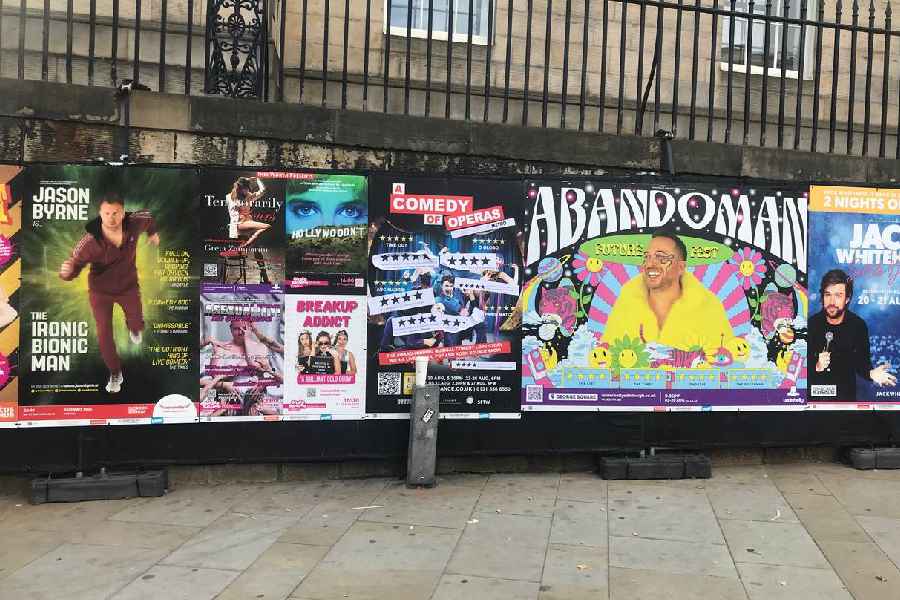A celebration of art, culture and creativity is what I basked in during my first-ever experience of the Edinburgh Festival Fringe, often recognised as the ‘fringe’.
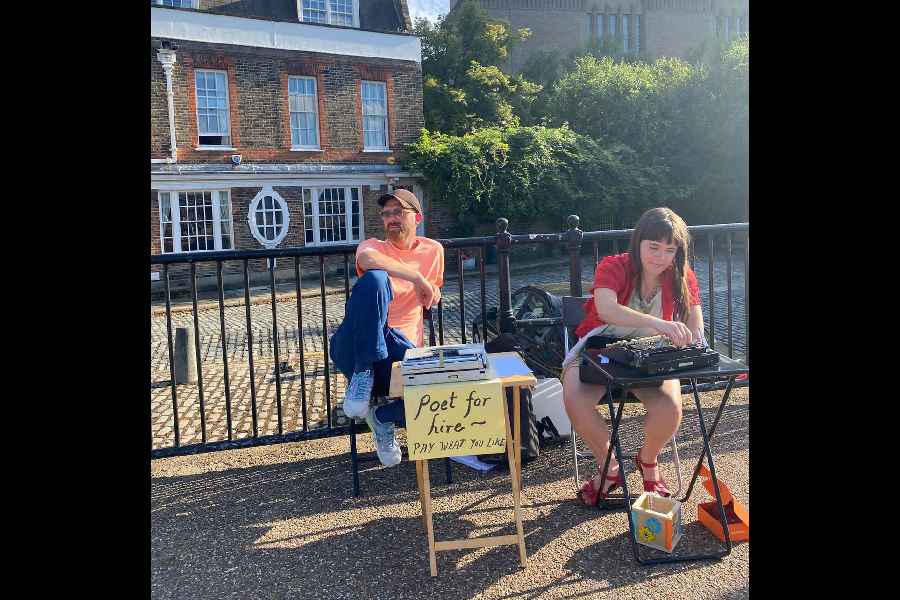
At a time when AI writes poetry, this is a rare sight in front of The Tate Museum in London
“I always knew saying the unsayable was going to be a powerful thing,” Phoebe Waller-Bridge (the Fleabag lady) philosophised, and she is now an unofficial brand ambassador of sorts for the festival. It’s at the Fringe that she received rave reviews and this statement by her encapsulates the spirit of the festival.
The unsayable is celebrated at this globally renowned cultural phenomenon that annually transforms the Scottish capital into an exquisite, vibrant and captivating hub of creativity and artistic expression. A mela of theatre, comedy, music, visual arts and mouth-watering dishes with special emphasis on fish and chips also serves as a platform for inclusivity.
The History of the Fringe

At the South Bank of the River Thames in London
Legend has it that the Edinburgh Festival Fringe traces its roots back to 1947 when eight theatre companies uninvited to the Edinburgh International Festival staged their own productions on the fringes of the main event. Royal Mile is one such place where I saw a wide range of performances, not confined to enclosed four-wall stretches, from Cockburn Street to George IV Bridge. The daring initiative of the eight groups marked the birth of what is now the world’s largest arts festival.
The London Diary
This is the route I followed. A flight from Delhi to Heathrow. I was flying with Air India. I arrived at the Queen’s Terminal and immediately availed an Oyster card to board a train to Farringdon Station. My friend, Rebecca Gould, who has strong Calcutta connection, was a sweetheart as always. I stayed at her residence in Green Bowling Lane.

The Globe Theatre in London
Rebecca along with James Williams conducted several workshops in Calcutta and was a rage among school students in Calcutta when Padatik and the British Council hosted the school one-act play competitions, in 2006 and 2007. The competition was curated by yours truly and since then it’s been one of the most enriching and rewarding friendships. Rebecca invited a couple of Indian theatre practitioners to collaborate for a theatre science project and that is when I went to London.
I spent a day in London and visited the Globe Theatre. I thought the Agatha Christie-described London cold would greet me but this August, the weather was pleasant enough to walk down the South Bank and enjoy the sight of River Thames, after 15 years since my last visit.
It was heartening to hear my student of theatre studies from Mahadevi Birla World Academy is now an actor who performed recently at the Globe Theatre. Ishani had performed in two Theatrecian productions — as Goldberg in Harold Pinter’s The Birthday Party and as Leela Benare in Vijay Tendulkar’s Silence The Court Is In Session.
The Tate Modern Museum is like the Mecca for artists. I remember watching a performance at the National Theatre during my last visit to London.
Heading to Edinburgh
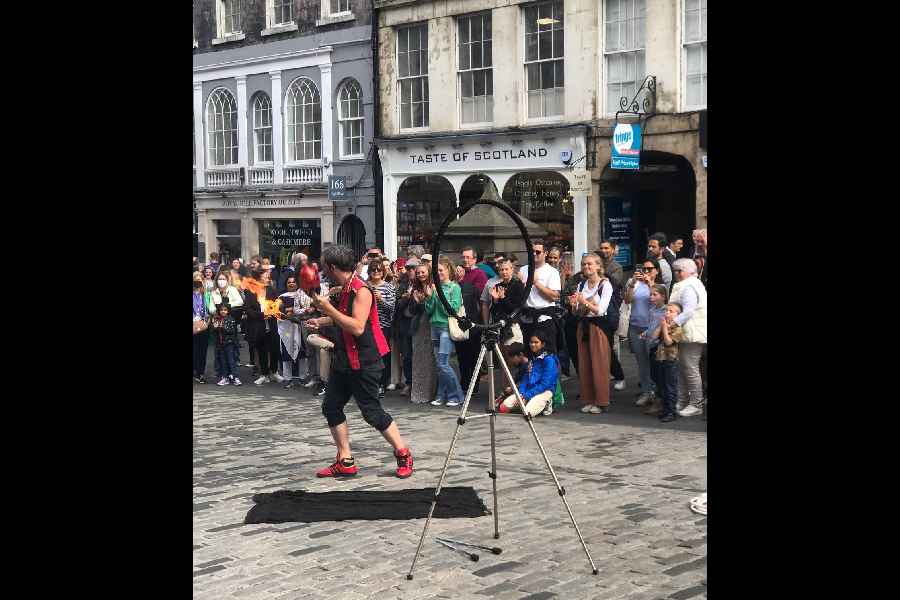
An open air performance at Royal Mile, Edinburugh, as part of the Edinburgh Festival Fringe 2023
The following morning I boarded a train from King’s Cross station to Edinburgh. En route to Waverly Station in Edinburgh is the cathedral city of York and Newcastle. Gunmeet Bindra, the principal of Daly College, Indore, was instrumental in my travel and zeal to experience the festival.
In Edinburgh, on my way from Waverly to Newhaven, where I stayed in a hostel, I came across a restaurant — Lahore — that caught my attention. The owner, hearing I’m from India, and after talking about Indira Gandhi, Lata Mangeshkar, Amitabh Bachchan and Md. Azharuddin, treated me to biryani that beats the taste of any grain in a biryani I’ve had before.
The Performances
Edinburgh turned into a market where plays were promoted, tickets purchased, and performances of all kinds were staged. Comedy seemed to qualify as the crowd favourite. The unconventional spaces such as parks, alleyways, even homes of people invite diverse and immersive attendance.
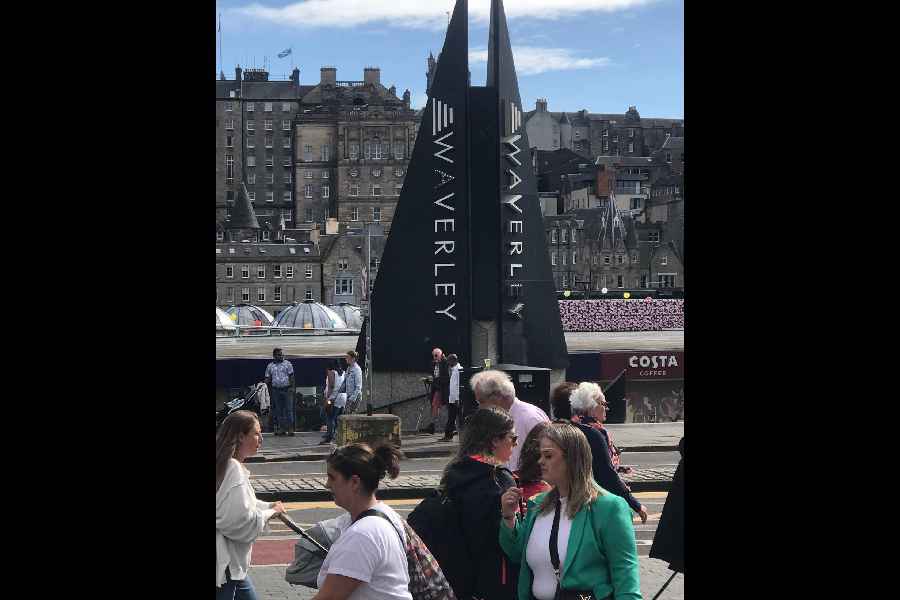
Waverly railway station in Edinburgh was my entry point into the city
They are creatively challenging for the production houses and artistes use innovative ways to ‘merge the performance with the space’. One such performance was Piping Hot by Madeleine Hamilton. The performance area was called The Cave. The artiste is also a writer, a comedian, and a bagpiper. “True stories of her sexual escapades” narrated while playing the bagpipes. She’s an American who with the Scottish instrument depicts her country’s chronic horniness. Each of the bagpipes reminds her of a man from her past.
I’m the Greatest Starr performed by Starr Domingue was another interesting fusion performance of live instrumental, cabaret and theatrical exhibition. It’s a satirical journey of an aspiring musical theatre performer from Toronto, Canada, who is … “female and Black”.
In one of the open-air performances, an African troupe invited a young White child and created a piece impromptu, which communicated the need to be appreciated irrespective of our origin and colour.
The spirit of inclusivity seemed to be the overarching theme of this year’s Fringe festival. I got a chance to talk about the youth theatre movement in India, concentrating on our work with theatre in the English language, and Theatrecian’s role in it, during a gathering at the Industry Hub.
How to Perform at the Fringe
My lesson from this trip is a hard-biting reality. One needs to network a foolproof plan or be prepared to burn. I’ve seen artistes selling their own tickets. Mothers promoting plays by distributing pamphlets and wives, husbands, friends trying to advertise shows for their loved ones. There’s enough information available online but it’s best to find a sponsor and experience the festival as a tourist before taking the plunge.
My sincere gratitude to Gunmeet Bindra, principal, Daly College; Sonya Mehta, director, Pathways World School; Kanak Gupta, director, Seth M.R. Jaipuria Schools; Rebecca Gould; Monika Bajaj, my school principal, and Ruhail Chowdhury of Voicesonline who made this trip possible for me.
Five nationalities in a cab
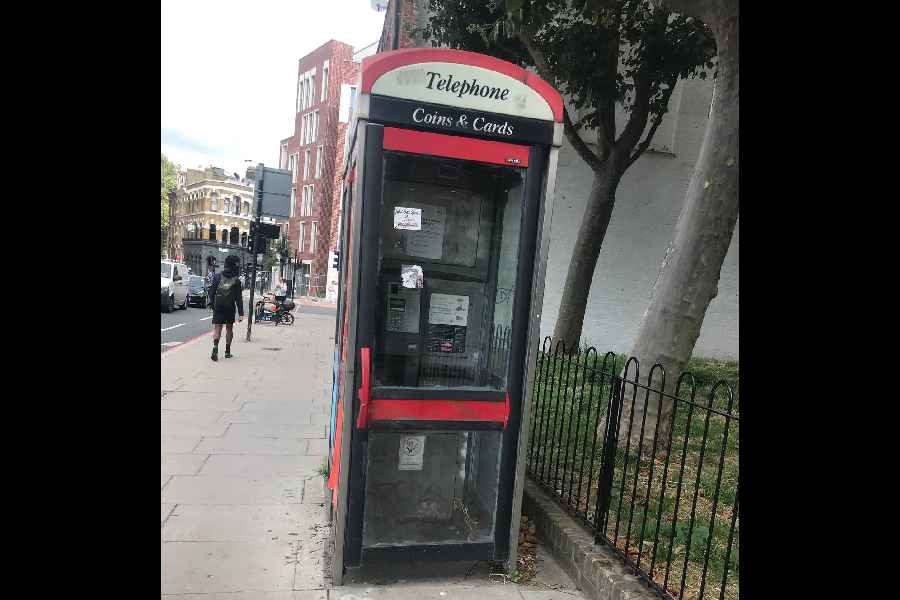
In the age of mobile phones, telephone booths still function in London
While coming back from Edinburgh, we got to know that our train would halt at Lancaster because of an accident. It wasn’t certain when we’d be back in London. During the train ride I connected with Romona, who was born in the UK but her family tree could be traced to the Indian subcontinent and spoke fluent Hindi, Persian and English. We decided to cab it back from Lancaster to London, but I could not afford 270 pounds. Shauna from Italy was also looking for a co-passenger and we decided to drive back together along with another fellow traveller, an American. Our pilot who would drive the cab turned out to be from Pakistan.
Back in London
I had a day to spend before heading back to Gurgaon. I heard the news about the tragic death by suicide in Jadavpur University. The communal riots in Nuh, Haryana, may seem to have settled by now, but in London, the RMT (a British trade union in the transport sector) announced strikes, making me reflect on the political unrest across the globe.
When I met Rukmini, a Theatrecian actor who is now in London, she enlightened me about inflation. The Modern High School for Girls, Calcutta, alumnus who made her stage debut with Theatrecian’s production of Who’s Afraid Of Virginia Woolf, an Edward Albee classic, is working at the Palace Theatre at Shaftsbury Avenue. She went to London on the Charles Wallace Scholarship and hopes to live her dreams.
During my nine-hour flight back from Heathrow to Delhi, I got a chance to catch up on Spider-Man: Across the Spider-Verse. I saw multiple Spider people from diverse backgrounds, genders and dimensions. The concept of this animated feature reflects the belief that anyone, regardless of their identity or background, can be a hero.
Perhaps, the identity of an actor, especially at a festival like the Edinburgh Festival Fringe, both mirrors the spirit of innovation and diversity as well as celebrates inclusivity.
The author is founder, Theatrician, and faculty, theatre and film studies, Pathways World School, Gurgaon
